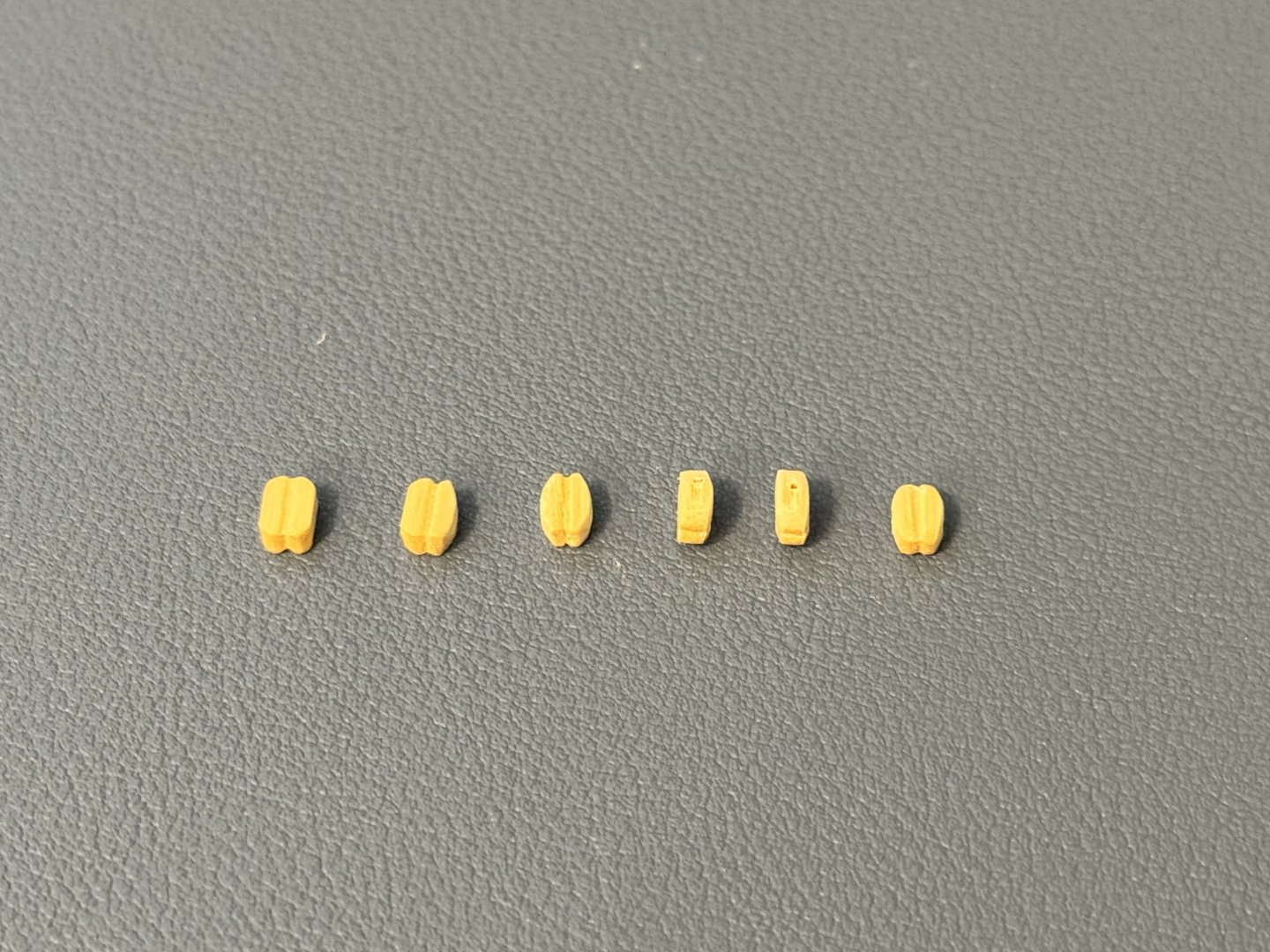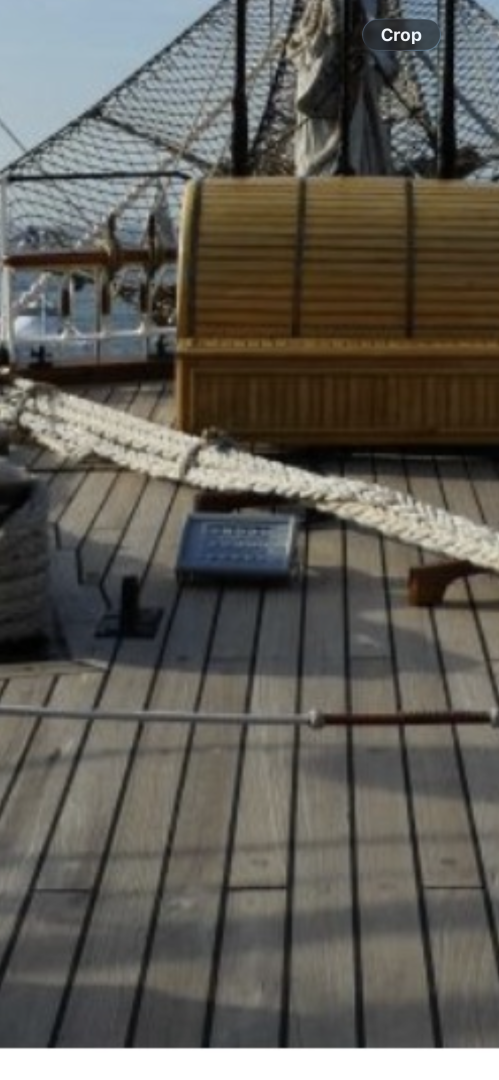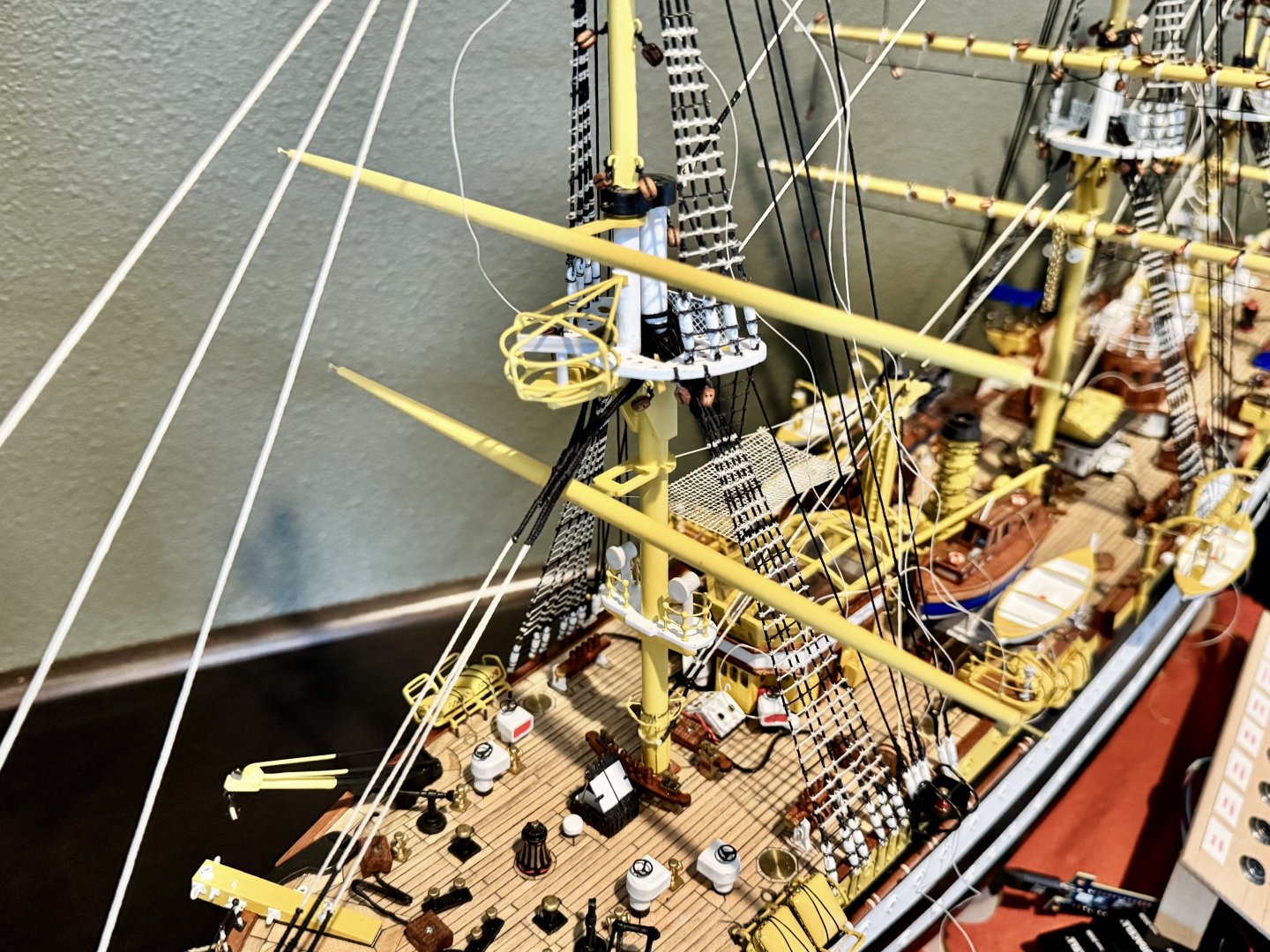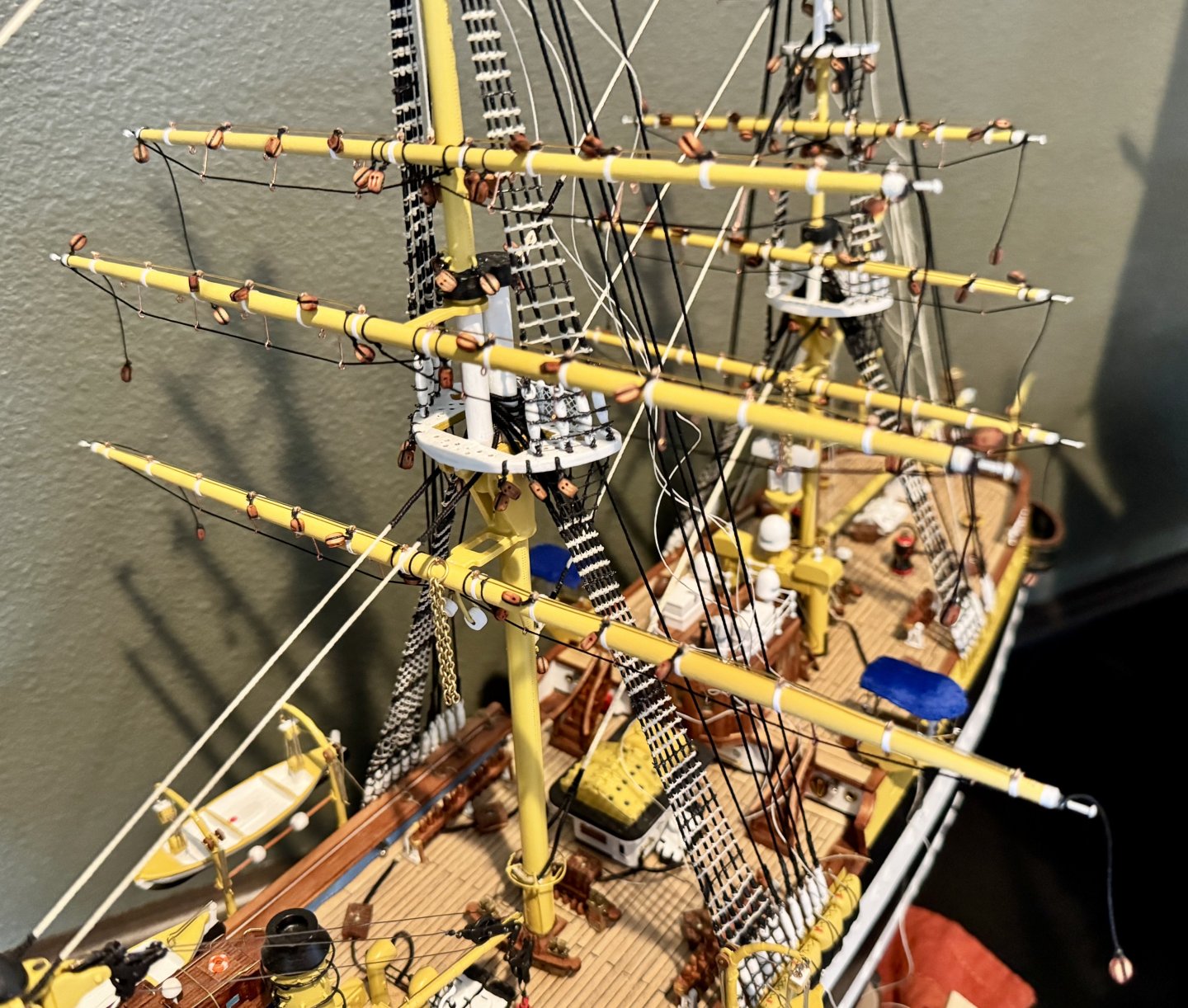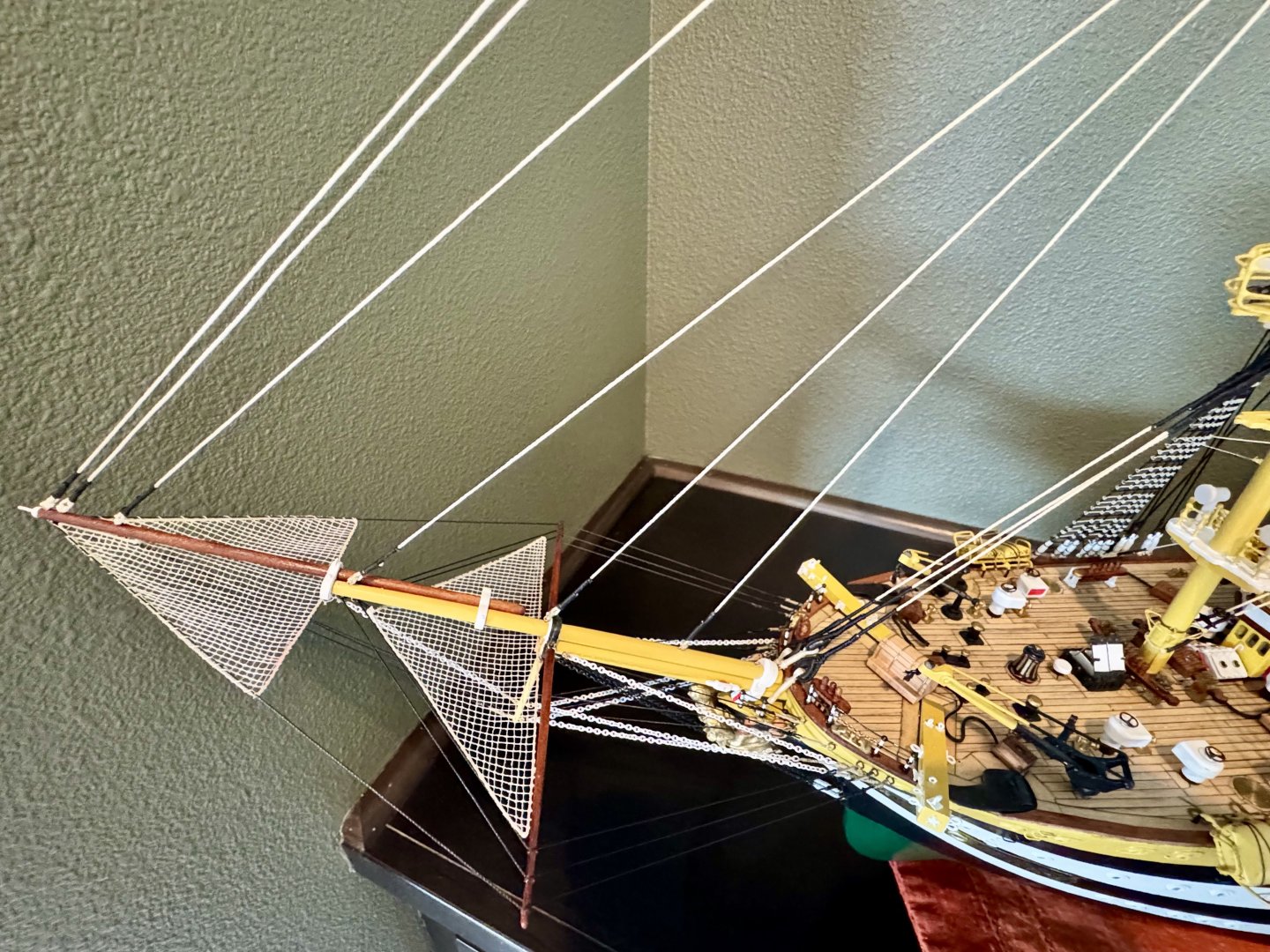-
Posts
645 -
Joined
-
Last visited
Content Type
Profiles
Forums
Gallery
Events
Everything posted by DanielD
-
The way I accomplished this exact problem is making the hole in the brass the exact diameter of the body of the LED. Slide the LED from the bottom to rest on the lip and affix in place. No need to worry about the leads touching the Mount. Then I painted the bottom of the Led, the underside of the Mount, the same black as the Mount and it becomes invisible.
-
Hi Bill, if I did it again I would do it differently. I soldered about 1” of flat 3mm bar in two places on the back side of the bracket, and then cut two slots into the side of the hull. This more or less made the entire device removable, so I could work behind it, then reinstall. Worked great, except cutting the flat slots into the hull was difficult. Instead, I’d I were you, I would use brass rod, maybe 1mm diameter, and affix to the back of the bracket. Then all you have to do is drill matching holes into the hull and slide in place. Still removable, but much easier construction.
-
Bill, I found absolutely nothing listed for the AV in the area of rigging. As such, I chose 3 sizes each for black and light tan. When I first bough the lines I’m using I was able to get here in the US. When I realized I didn’t have enough, I had to obtain more from China which took about a month to arrive. So…not likely a good resource anymore. The lines I am using are lightly pre-waxed so no “fuzz” and work well, just current availability is non-existent. As for the blocks, I used the ones that came in the kit but I’m modifying them to be more realistic. Hard to put into words, but I’ll try. Holding the block in a pair of needle nose pliers, sand the corners off the top and bottom creating a curved edge. Flip 180 degrees and repeat. Next grab the block with the pliers along the edges just sanded, 90 degrees from the initial sanding, and sand off the corners again. Flip 180 degrees and repeat. This rounds out the block in two plains, to make it much more realistic. Lastly, I use a triangular file and redo the grooves, top, bottom and both sides. When I get home I’ll upload an image of a before and after. It’s quite the transformation for about a minute of work.
-
Bill, there is nothing that says the resistor has to be next to the LED, meaning, the resistor can be inside the hull and a wire from one end of the resistor goes to the LED. In my setup, I ran a series scenario with the LEDs, meaning one resistor then the LEDs are run one after the other in series. This type of wiring does have a draw back, for the same reason Christmas lights are wired in parallel now days, if one bulb goes out, they all do. That aside, the resistor is inside the hull making for less hardware in the box.
-
Bill, nothing much you can do now. My next build I will paint the inside of the hull and the underside of the deck black, then an off white so that the light will reflect around eventually coming out the port holes. The light layer will reflect most of the light, but what leaks through the black layer will absorb the light so it can’t get through to the deck, etc. turning down the intensity of the LEDs didn’t make any improvement in my case.
-
Hi Bill. Yes, I drilled the port holes and installed the grommets before painting. I paint most things using my air brush so I have complete control of where paint goes. When I sprayed the colors, I sprayed at an angle, not directly into the port holes, so what little paint makes it through the opening is not directed at the midline LEDs. As for my choice in painting the grommets, the porthole frames, take a look at any image of the real AV and you will find that the porthole frames are painted the same as the surrounding hull. I also added, not included in the kit, the porthole rain gutters which were all affixed prior to painting. Hope this helps. Daniel
-
Hey Bill, I used Elmer’s Rubber Contact Cement. It is great, but it was hard to get the hang of using it so I think that is why some don’t like to use it. For me, I worked in small sections the length of the ship. Since the AV is a steel hull, there is no need to spend a ton of time making planks, so I used long plank sections from bow to stern. I started by drawing a line on the hull to place the first plank. Brush a thin coat of the cement on the back side of a couple planks and on the area along the hull for two or three planks. Let the glue dry! This is important! The glue will be dry to touch. Then carefully place a plank along the line that was drawn on the hull. Press the plank in place. Contact and pressure is what activates the glue, but it is permanent. You won’t be able to remove the plank without braking it into a bunch of pieces. Careful placement is critical! This is what makes it hard to use. However, once I got the hang of it, it was by far my favorite way to attach planks to the hull and I will use this technique on the next deck I do in the future. Again, once “pressed” in place, it’s immediately stuck and permanent and no wait time is needed between planks.
-
Good morning Bill. I swapped out the threads for pre-waxed thread. While the images here look like white, it’s actually light tan although the actual ship seems to be white and very dark almost black. A couple reasons for me switching to the lighter color lines is that I’m building this model primarily for the night time display that the AV is known for, the Italian flag. Using the lighter color lines will reflect the red, white and green up lights better giving a more impressive display. Using dark colors will absorb much the light causing a much duller display. Except for the pre-waxed lines, most of the rest is from the kit. Notable exceptions are 1) the real AV has metal bands at intervals on the yards. I simulated this by using a standard sheet of white paper and cutting 1mm strips. Glue them around the yards and I have the appearance of a white band that has some depth to it (see the images above). 2) I used smaller eye pins than what comes with the kit. I think the ones in the kit are 3mm in diameter while the ones I used are just under 2mm, 1/3 smaller than the kit provides. Using the ones in the kit are just way to big for the scale of the ship. Actually, so are the ones I used, but it’s much better scale wise.
-
Hi Bill, I believe that I just put 2 warm LEDs in my bridge structure, more towards the middle of the ceiling which will allow the light to come from the center of the room. Typically bridge lighting is on the dark side to help with visual acuity while underway. I have it tied to the deck lighting circuit, and use the same warm LEDs as I have on the deck so the brightness is exactly the same as the deck lights. As for the windows, I too skipped the plastic sheet that came with the kit and instead used liquid glass, a product from Testors to fill the window space with an Elmer’s glue like substance that drys clear and thin, nice glass look.
-
Bill, sorry it’s been so long. As far as the home made netting, I map out the shape and size of the net I need, run a larger sized rope around the outside of the shape like in the image below. Then I add the vertical thread at one or two mm apart. Once all those are strung, I add the horizontal thread using a clove hitch at each intersection. The last step is to run a light bead of CA glue along the outside rope sealing all of the outside knots in place. The key for a good hand made net is to be as precise as possible when adding the thread, knowing that it will never be perfect. It’s those minor mis-aligned threads or knots that make the net appear hand made. After many hours, you end up with a finished product. I have about 80 hours in the three nets in the following post.
-
Exactly! But after I thought I had all the lighting figured out, I forgot about about some lighting on the foremast, just under the first platform, then the crane area needed lighting, and also some just aft of the mizzen mast. A bit of oversight, but because I was able to pull off the structures, I was able to tie into the electrical at that location. Sure I was limited on what circuit the additional LEDs were on, but it all worked out.
-
Bill, that is correct. I created pins or short dowels strategically placed on the buildings that snuggly fit into holes of the deck. This allowed me to remove the structures as needed to work around the ship. In fact, even now the structures are not glued in except for the fire control room that is sandwiched between the two decks. I’m glad I didn’t glue them down as I’ve pulled them up several times to run extra wires for lighting that I had not planned for. Daniel
-
Hi Bill, I basically didn’t even look at the kit instructions for the inside of the bridge. I made everything from scratch to emulate the virtual tour as close as my skill level allowed. I made the telephones, the gauges, the supports for the helm, designed the floor based on the actual ship, lights, etc.
About us
Modelshipworld - Advancing Ship Modeling through Research
SSL Secured
Your security is important for us so this Website is SSL-Secured
NRG Mailing Address
Nautical Research Guild
237 South Lincoln Street
Westmont IL, 60559-1917
Model Ship World ® and the MSW logo are Registered Trademarks, and belong to the Nautical Research Guild (United States Patent and Trademark Office: No. 6,929,264 & No. 6,929,274, registered Dec. 20, 2022)
Helpful Links
About the NRG
If you enjoy building ship models that are historically accurate as well as beautiful, then The Nautical Research Guild (NRG) is just right for you.
The Guild is a non-profit educational organization whose mission is to “Advance Ship Modeling Through Research”. We provide support to our members in their efforts to raise the quality of their model ships.
The Nautical Research Guild has published our world-renowned quarterly magazine, The Nautical Research Journal, since 1955. The pages of the Journal are full of articles by accomplished ship modelers who show you how they create those exquisite details on their models, and by maritime historians who show you the correct details to build. The Journal is available in both print and digital editions. Go to the NRG web site (www.thenrg.org) to download a complimentary digital copy of the Journal. The NRG also publishes plan sets, books and compilations of back issues of the Journal and the former Ships in Scale and Model Ship Builder magazines.



